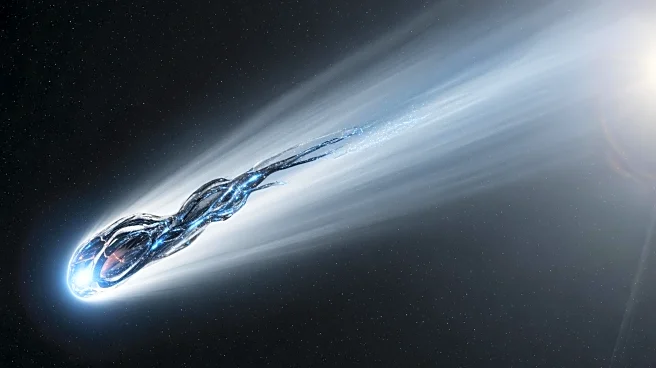What's Happening?
Recent observations from the Nordic Optical Telescope have revealed a transformation in the interstellar object 3I/ATLAS, which initially displayed an anti-tail towards the Sun, now showing a tail away from the Sun. This change occurred as 3I/ATLAS approached
the Sun, with the mass loss rate scaling with solar radiation flux. The primary driver of this activity is believed to be carbon dioxide, as inferred from spectroscopic data. The transition from anti-tail to tail is explained by a theoretical model detailing the physics behind this evolution, highlighting the role of sublimation rates and scattering cross-sections.
Why It's Important?
The observations of 3I/ATLAS provide valuable insights into the behavior of interstellar objects as they interact with solar radiation. Understanding these dynamics is crucial for astrophysics, as it helps scientists learn more about the composition and physical properties of such objects. The findings could influence future studies on interstellar bodies and their trajectories, contributing to the broader knowledge of space phenomena and the potential for discovering new types of celestial objects.
What's Next?
Post-perihelion observations of 3I/ATLAS at its closest approach to Earth in December 2025 will be crucial in determining its nature. These observations will help assess whether 3I/ATLAS exhibits characteristics of a natural comet due to intense solar heating. The results could lead to a reevaluation of its classification and provide further evidence for the theoretical models explaining its behavior.
Beyond the Headlines
The study of 3I/ATLAS challenges existing perceptions of interstellar objects and their interactions with solar radiation. It raises questions about the composition and structure of such bodies, potentially leading to new theories about their origins and the processes governing their behavior in space.














